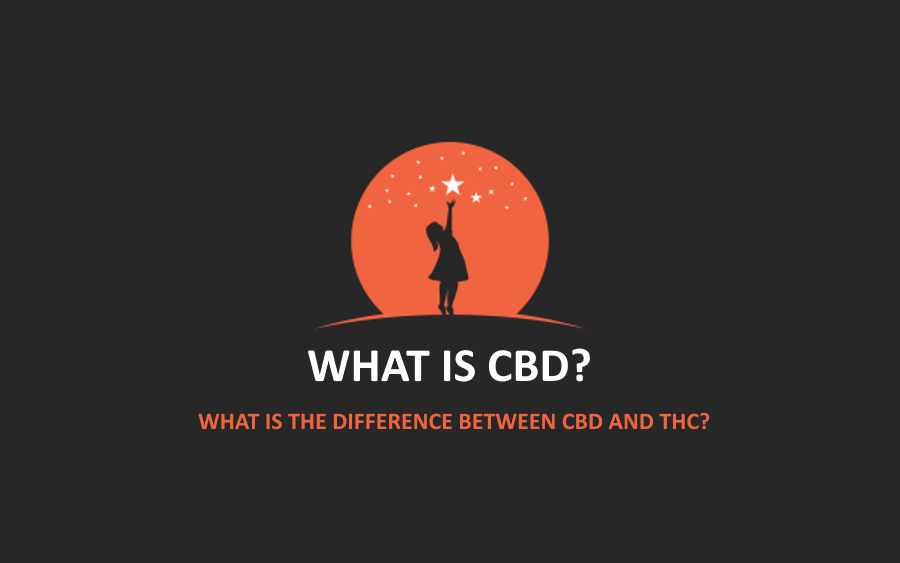The hemp plant, domesticated over 6,000 years ago in China, produces more than 400 organic compounds. The two main groups of molecules with bioactive properties found in hemp are terpenes and cannabinoids—CBD pertains to the latter category.
 Cannabinoids are compounds that influence the human nervous system via the endocannabinoid system (ECS). The hemp plant features dozens of cannabinoids, with THC, CBD, and CBG being the most common. They differ in their chemical structure and effects.
Cannabinoids are compounds that influence the human nervous system via the endocannabinoid system (ECS). The hemp plant features dozens of cannabinoids, with THC, CBD, and CBG being the most common. They differ in their chemical structure and effects.
CBD is thought to have many therapeutic applications, and is also used as a daily dietary supplement to encourage homeostasis. While beneficial for overall well-being, CBD doesn’t have the psychotropic properties of its cousin, THC.
What is the difference between CBD and THC?
CBD stands for cannabidiol, and THC for tetrahydrocannabinol. Both are cannabinoids derived from hemp and cannabis plants. The key difference between CBD and THC is that CBD does not induce a high. As a result, CBD is legal in most countries while THC is not. Intriguingly, CBD displays the potential to limit THC’s psychotropic effects by decreasing its ability to bind with CB1 cannabinoid receptors. 
Differences between CBD and THC
CBD:
- Non-psychoactive: doesn't give users a high.
- No side effects are known.
- Helps prevent psychoavtive effects of THC.
- It is legal in most countries.
THC:
- Psychoactive: gives users a high.
- Has side effects such as paranoia and anxiety.
- Effects are consistent to a psychosis.
- It is illegal in most countries.
How does CBD work?
The human nervous system contains a large number of receptors. Receptors are like mobile telephone masts transmitting signals. A mobile mast accepts an electromagnetic wave as a signal, while receptors use specific molecules to transmit messages.
One such receptor system is the endocannabinoid system (ECS). ECS receptors are located in the human brain and in the peripheral nervous system—spinal cord and nerves—among other locations. In the brain, the receptors reside in areas responsible for perception, concentration, memory, and movement. That’s why the ECS is involved in the regulation of many physiological processes including the feeling of pain, mood, and appetite.
The two predominant ECS receptors are CB1 and CB2. These receptors bind to molecules produced within the body known as endocannabinoids. 2-Arachidonoylglycerol (2-AG) is one major endocannabinoid that binds to CB1 and CB2 receptors. CBD, a phytocannabinoid (derived from plants), doesn’t bind to these receptors directly, although it is able to replicate some of the effects of 2-AG.
CBD is said to have antispasmodic, antipsychotic, anticonvulsant, and neuroprotective properties. It can also help to alleviate everyday stress and make the nervous system more resilient.
The biology and chemistry of CBD
Wild or landrace Cannabis sativa plants are sources of a variety of organic compounds, with THC and CBD among them. Just as other domesticated plants were selected to produce specific molecules in high quantities, Cannabis sativa has been selectively bred for different purposes. As a result, the original plant has been split into distinct cultivars with different qualities. Hemp has been bred for industrial use and to produce high levels of CBD and trace amounts of THC.
THC and CBD are closely related to plant-derived compounds called terpenes and terpenoids (terpenes denatured by oxygen), such as limonene and menthol, and curcuminoids found in turmeric and mustard seeds. Terpenes are a large class of organic molecules used extensively in traditional cuisine for their aromatic qualities. They also play a prominent role in traditional herbal remedies.
THC and CBD are produced in the same biosynthesis pathway. In other words, they have the same precursor molecule, cannabigerolic acid, CBGA. When the precursor is available, an enzyme, CBDA synthase, makes an extra ether link and converts CBGA into CBDA. Following decarboxylation, this converts to active CBD. In the parallel pathway, THCA synthase converts CBGA into THC precursor, THCA.

